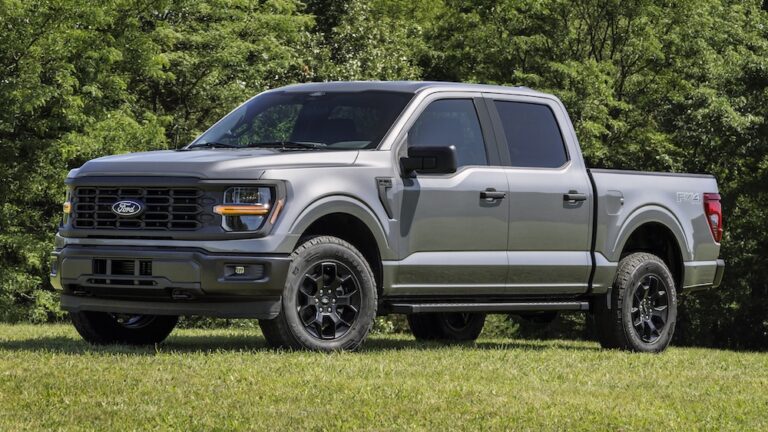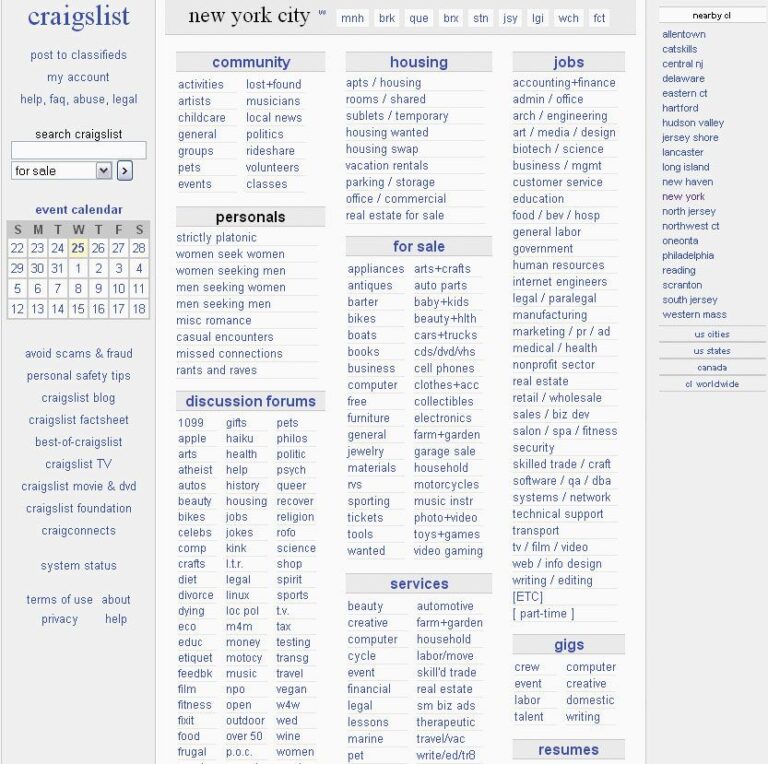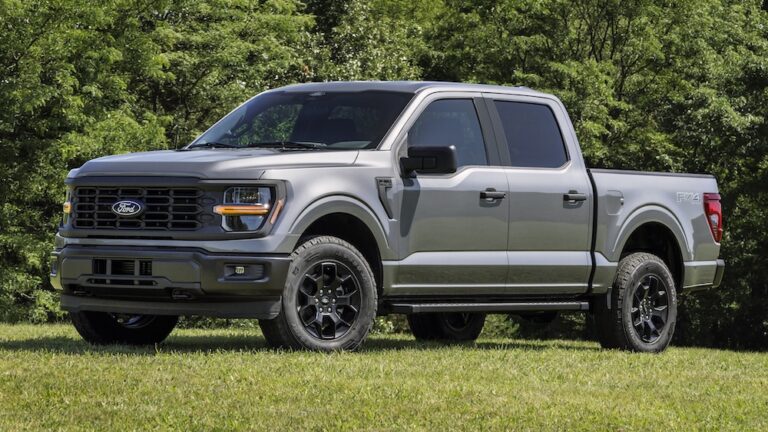80’s Chevy Trucks For Sale: Your Comprehensive Guide to an Enduring American Icon
80’s Chevy Trucks For Sale: Your Comprehensive Guide to an Enduring American Icon cars.truckstrend.com
The roar of a V8 engine, the unmistakable lines of a square body, and a sense of rugged capability – these are the hallmarks of 80s Chevy trucks. More than just vehicles, these pickups, Blazers, and Suburbans represent a golden era of American automotive design and utility. Today, decades after they first rolled off the assembly lines, 80s Chevy trucks are experiencing a resurgence in popularity, becoming highly sought-after classics for collectors, restorers, and everyday drivers alike. If you’re considering diving into the world of vintage American iron, understanding the nuances of these timeless machines is crucial. This comprehensive guide will walk you through everything you need to know about 80s Chevy trucks for sale, from their enduring appeal to practical buying advice.
The Enduring Appeal of 80s Chevy Trucks
80’s Chevy Trucks For Sale: Your Comprehensive Guide to an Enduring American Icon
What is it about a vehicle from the 1980s that captures the imagination of so many in the 21st century? For 80s Chevy trucks, the answer lies in a compelling blend of nostalgia, robust engineering, and timeless aesthetics.
Design Aesthetics: The "square body" design, predominantly associated with the 1973-1987 C/K series, defines the look of the early to mid-80s Chevy truck. These trucks boast clean, purposeful lines that exude strength and simplicity. They stand in stark contrast to the aerodynamic, often overly complex designs of modern vehicles. Even the later 80s models, part of the GMT400 platform (1988-1991), while more rounded, maintained a distinctly muscular and utilitarian charm. This straightforward, no-nonsense styling has aged remarkably well, making them instantly recognizable and undeniably cool.
Robust Construction and Mechanical Simplicity: Unlike many contemporary vehicles packed with intricate electronics, 80s Chevy trucks were built with a focus on durability and ease of repair. Their body-on-frame construction, heavy-duty axles, and relatively simple mechanical systems (often carbureted or early throttle-body injected engines) mean they are inherently robust and forgiving. For enthusiasts who enjoy working on their own vehicles, this simplicity is a huge draw, reducing complex diagnostic issues and making maintenance straightforward.
Nostalgia and Pop Culture: The 1980s were a pivotal decade, and these trucks were ubiquitous. They were the workhorses of farms and construction sites, the family haulers for suburban adventures, and the star vehicles in countless movies and TV shows. Owning an 80s Chevy truck is, for many, a tangible connection to a cherished past, evoking memories of childhood, freedom, and a simpler time.
Versatility and Customization: Whether you’re looking for a reliable daily driver, a weekend off-roader, a show truck, or a dedicated workhorse, an 80s Chevy truck can fill the role. Their robust platform and immense aftermarket support make them incredibly versatile. From mild lifts and custom paint jobs to full LS engine swaps and sophisticated air ride suspensions, the possibilities for customization are virtually limitless.
Key Models and Their Characteristics
The 1980s saw Chevrolet produce a diverse lineup of trucks and truck-based SUVs. Understanding the different models is essential when you’re looking for an 80s Chevy truck for sale.
The C/K Series (1973-1987 "Square Body" & 1988-1991 GMT400)

This is the quintessential 80s Chevy truck. The "C" denotes 2-wheel drive, and "K" denotes 4-wheel drive. The numbers following (10, 20, 30) refer to their load capacity: 1/2-ton, 3/4-ton, and 1-ton, respectively.
- C10/K10: The most popular and iconic models. The C10 (2WD half-ton) is often sought after for its smooth ride and potential for lowering, while the K10 (4WD half-ton) is a favorite for off-roading and a rugged stance. They came in various configurations:
- Cab Styles: Regular Cab, Extended Cab (Club Cab), and Crew Cab.
- Bed Lengths: Short Box (short wheelbase, often more desirable for aesthetics and maneuverability) and Long Box (long wheelbase, ideal for hauling).

- C20/K20 & C30/K30: These heavier-duty trucks were built for serious work. They feature stronger frames, larger brakes, and often came with more powerful engine options. While less common as daily drivers or show trucks, they are excellent for those needing true utility.
Engine Options: Throughout the 80s, the C/K series offered a range of engines:

- Small Block V8s: The venerable 305 cu in (5.0L) and 350 cu in (5.7L) were the most common and reliable choices.
- Big Block V8s: The powerful 454 cu in (7.4L) was available in heavier-duty models.
- V6s: Smaller 229 cu in (3.8L) and 262 cu in (4.3L) V6s offered better fuel economy.
- Diesel: The 6.2L Detroit Diesel V8 was introduced, known for its longevity but often underpowered for its size.
Transmissions: Both manual (e.g., SM465 4-speed) and automatic (e.g., TH350, TH400, 700R4 overdrive automatic in later years) transmissions were available. The 700R4 is particularly desirable for highway driving due to its overdrive gear.
Blazer and Suburban
Based on the C/K platform, these full-size SUVs share many components with their truck counterparts.
- K5 Blazer: A 2-door, full-size SUV that offered a removable hardtop (especially in earlier 80s models), making it incredibly versatile for open-air cruising. Highly popular for off-roading and cruising.
- Suburban: The original large family hauler, a 4-door SUV offering ample seating and cargo space. Suburbans are excellent for those needing utility combined with passenger capacity, often found with 3rd-row seating.
S-10 / S-15 (GMC Sonoma)
Introduced in 1982, the S-10 was Chevrolet’s answer to the growing demand for compact trucks.
- Compact and Maneuverable: Smaller and more fuel-efficient than the full-size C/K trucks.
- Engine Options: Primarily 4-cylinder and V6 engines (including the robust 2.8L and later the popular 4.3L V6).
- Versatility: Available in regular cab and extended cab configurations, with various bed lengths. The S-10 Blazer and S-15 Jimmy were SUV variants. While not as iconic as the square body, they offer an affordable entry into 80s Chevy truck ownership.
Benefits of Owning an 80s Chevy Truck
Beyond their classic appeal, there are many practical advantages to bringing an 80s Chevy truck into your garage:
- Affordability: Compared to new trucks with their exorbitant price tags, or even highly sought-after muscle cars, many 80s Chevy trucks remain relatively affordable, offering significant bang for your buck.
- Reliability & Durability: These trucks were engineered to last. With proper maintenance, they can easily achieve hundreds of thousands of miles.
- Ease of Maintenance & Parts Availability: This is perhaps their biggest practical advantage. Thanks to their widespread production and mechanical simplicity, parts (both OEM and aftermarket) are incredibly easy to find and often inexpensive. Almost any component you need can be sourced from local auto parts stores, online retailers, or junkyards.
- Customization Potential: The aftermarket for these trucks is immense. Whether you want to lift it, lower it, upgrade the engine, or completely redo the interior, there’s a huge array of parts and services available.
- Investment Potential: Clean, original, or professionally restored examples of 80s Chevy trucks, particularly C10s and K5 Blazers, have been steadily appreciating in value, making them a potentially sound investment.
- Classic Status: Many 80s models are now old enough to qualify for classic vehicle insurance, which can offer significant savings. In some regions, they may also be exempt from certain emissions testing or benefit from reduced registration fees.
What to Look For: A Buyer’s Guide
Finding the right 80s Chevy truck for sale requires a keen eye and a systematic approach. Here’s a comprehensive checklist of what to inspect:
-
Rust, Rust, Rust: This is the #1 enemy of these trucks. Inspect thoroughly:
- Cab Corners & Rocker Panels: These are notorious rust spots due to trapped moisture.
- Fender Wells & Wheel Arches: Especially on 4×4 models where mud can accumulate.
- Bed Floor & Supports: Check under the bed for rusted crossmembers.
- Frame Rails: Look for deep pitting, cracks, or signs of previous rust repair that might be hiding more serious issues.
- Floor Pans: Check under the carpet for soft spots.
- Windshield/Rear Window Seals: Rust can form around the glass, leading to leaks.
-
Engine Condition:
- Leaks: Look for oil, coolant, or transmission fluid leaks.
- Smoke: Blue smoke (oil burning), white smoke (coolant), or black smoke (rich fuel mixture) from the exhaust are red flags.
- Noises: Listen for knocking, ticking, or excessive valvetrain noise.
- Fluid Levels: Check oil and coolant for proper levels and appearance.
- Maintenance History: Ask for service records if available.
-
Transmission & Drivetrain:
- Automatic: Shifts should be smooth, without harsh jerks or slipping. Check fluid color and smell (burnt smell indicates trouble).
- Manual: Clutch should engage smoothly, and gears should shift without grinding.
- 4×4 System (K-models/Blazers): Engage 4-high and 4-low during a test drive to ensure the transfer case works properly. Listen for clunks from U-joints.
-
Suspension & Steering:
- Bushings: Worn control arm bushings, leaf spring bushings, and body mounts can cause clunking noises and poor handling.
- Ball Joints & Tie Rods: Check for excessive play.
- Shocks: Look for leaks or a bouncy ride.
- Power Steering: Check for leaks, groaning noises, or difficulty turning.
-
Brakes:
- Pedal Feel: Should be firm, not spongy.
- Stopping Power: Truck should stop straight without pulling to one side.
- Rotor/Drum Condition: Visible wear or scoring.
-
Interior:
- Seats: Check for tears, collapsed foam, or broken frames.
- Dash: Look for cracks, especially common in 80s plastics.
- Headliner: Sagging or tears.
- Electronics: Test all lights, wipers, horn, radio, power windows (if equipped), and especially the heater and A/C. A non-working A/C can be an expensive fix.
-
Documentation:
- Ensure it’s clear and matches the VIN on the truck.
- Service Records: A bonus if available, indicating regular maintenance.
-
Test Drive: This is non-negotiable. Pay attention to how the truck accelerates, shifts, brakes, and handles. Listen for any unusual noises and feel for vibrations or pull.
Common Challenges and Solutions
Even with their robust nature, 80s Chevy trucks come with their own set of challenges, primarily due to age.
- Rust: As mentioned, it’s the biggest enemy.
- Solution: For minor rust, cutting out affected areas and welding in patch panels is common. For extensive rust, full body panel replacement (cab corners, rocker panels, fenders) might be necessary. Undercoating and regular cleaning can prevent future issues.
- Aging Components: Rubber bushings, seals, hoses, and wiring can become brittle and fail.
- Solution: Proactive replacement of critical wear items during a restoration or initial purchase. Many full bushing kits are available.
- Fuel System Issues: Older carbureted engines can be finicky, requiring tuning or rebuilding. Early TBI (Throttle Body Injection) systems (late 80s) can also have sensor or injector issues.
- Solution: Carburetor rebuilds or upgrades to modern fuel injection systems (like Holley Sniper or FiTech) are popular and greatly improve reliability and driveability.
- Electrical Gremlins: Old wiring can lead to intermittent issues with lights, gauges, or accessories.
- Solution: Often, these are simple ground issues or corroded connections. A systematic approach with a multimeter is key. Full wiring harness replacements are also available if problems are widespread.
- Finding a Good Example: Clean, unmolested 80s Chevy trucks are becoming harder to find.
- Solution: Patience is key. Expand your search radius, utilize online marketplaces (Craigslist, Facebook Marketplace, specialized classic car sites), and consider joining enthusiast groups. A pre-purchase inspection by a trusted mechanic specializing in classics is highly recommended.
Tips for Buying and Owning
- Set a Realistic Budget: Beyond the purchase price, factor in immediate repairs, routine maintenance, and any desired upgrades or restoration costs.
- Research Specific Models/Years: Understand any quirks or common issues specific to the year and model you’re interested in.
- Don’t Rush: Take your time. There are many trucks out there.
- Get a Pre-Purchase Inspection (PPI): Even if you’re handy, a professional eye can spot issues you might miss.
- Negotiate: Always negotiate the price. Be prepared to walk away if the deal isn’t right.
- Join Enthusiast Communities: Online forums (e.g., Squarebody.com, fullsizechevy.com), Facebook groups, and local car clubs are invaluable resources for advice, parts, and camaraderie.
- Prioritize Maintenance: Once purchased, start with a full fluid change, check filters, spark plugs, and wires. Address any immediate safety concerns.
- Enjoy the Process: Owning an 80s Chevy truck is a journey. Whether it’s a daily driver or a full restoration, embrace the character and the community.
80’s Chevy Trucks For Sale: Estimated Price Guide
The price of an 80s Chevy truck can vary wildly based on its condition, model, engine, drivetrain (2WD/4WD), location, and any modifications or restoration work already completed. This table provides general estimates, but always conduct your own research and inspection.
| Model/Condition | Project/Parts Truck | Driver Quality (Needs Work) | Good Driver (Solid, Minor Flaws) | Show Quality/Restored |
|---|---|---|---|---|
| C10 (2WD) | $1,500 – $5,000 | $5,000 – $12,000 | $12,000 – $25,000 | $25,000 – $60,000+ |
| K10 (4WD) | $2,000 – $7,000 | $7,000 – $15,000 | $15,000 – $30,000 | $30,000 – $70,000+ |
| C20/K20 (Heavy Duty) | $1,000 – $4,000 | $4,000 – $10,000 | $10,000 – $20,000 | $20,000 – $50,000+ |
| K5 Blazer | $2,500 – $8,000 | $8,000 – $18,000 | $18,000 – $35,000 | $35,000 – $80,000+ |
| Suburban | $1,000 – $5,000 | $5,000 – $12,000 | $12,000 – $25,000 | $25,000 – $60,000+ |
| S-10 | $500 – $3,000 | $3,000 – $7,000 | $7,000 – $15,000 | $15,000 – $30,000+ |
Disclaimer: These prices are estimates and can fluctuate significantly based on region, specific year, engine/transmission combination, options, historical significance, and overall market demand. "Show Quality" can include highly customized or restomod builds that exceed these ranges.
Frequently Asked Questions (FAQ)
Q: Why are 80s Chevy trucks so popular today?
A: Their popularity stems from a combination of classic styling (especially the "square body"), robust durability, mechanical simplicity, excellent parts availability, and a strong sense of nostalgia for the 1980s.
Q: What’s the difference between a C10 and a K10?
A: "C" series trucks are 2-wheel drive, while "K" series trucks are 4-wheel drive. The numbers (10, 20, 30) denote the payload capacity: 1/2-ton, 3/4-ton, and 1-ton, respectively.
Q: What are the most common issues to look out for when buying one?
A: The most prevalent issue is rust, particularly in the cab corners, rocker panels, bed, and frame. Other common concerns include worn suspension components, aging wiring, and potential issues with original carburetors or early fuel injection systems.
Q: Are parts readily available for these trucks?
A: Yes, parts availability is one of their greatest strengths. Due to their high production numbers and long lifespan, both OEM-style replacement parts and aftermarket performance/restoration parts are abundant and relatively inexpensive.
Q: Can an 80s Chevy truck be a reliable daily driver?
A: Absolutely. With proper maintenance and potentially some modern upgrades (like a fuel injection conversion, upgraded brakes, or A/C overhaul), many 80s Chevy trucks serve as dependable daily drivers.
Q: How much should I budget for a decent 80s Chevy truck?
A: A decent, running driver-quality truck typically ranges from $8,000 to $20,000. Projects needing significant work can be a few thousand dollars, while fully restored or show-quality examples can easily exceed $30,000-$60,000+.
Q: Are they good for restoration projects?
A: Yes, they are highly regarded as excellent restoration platforms. Their simple mechanics, readily available parts, and strong enthusiast community make them approachable for both novice and experienced restorers.
Q: What engines were commonly available in 80s Chevy trucks?
A: The most common engines were the small block V8s (305 and 350 cubic inches). Larger 454 big block V8s were available in heavy-duty models, along with various V6 engines (229, 262, 4.3L) and the 6.2L diesel.
Conclusion
The market for 80s Chevy trucks for sale is vibrant, driven by a deep appreciation for their classic lines, robust construction, and undeniable character. These trucks represent a unique blend of American automotive history, practicality, and personal expression. Whether you’re seeking a nostalgic cruiser, a rugged workhorse, or a blank canvas for a custom build, an 80s Chevy truck offers an incredibly rewarding ownership experience.
Embarking on the journey of finding and owning one of these iconic vehicles is more than just a purchase; it’s an investment in a piece of automotive heritage. With careful research, a thorough inspection, and a little patience, you can find the perfect 80s Chevy truck to call your own and join a passionate community that celebrates these timeless machines. Their legacy continues to grow, ensuring that these enduring American icons will be cherished on roads and trails for many decades to come.






